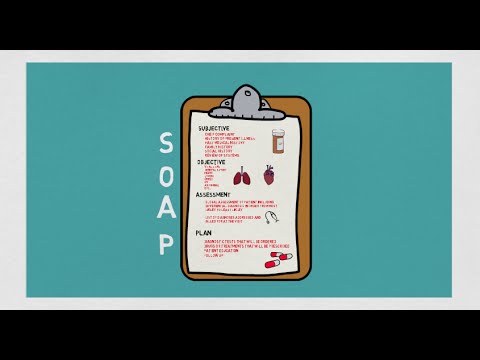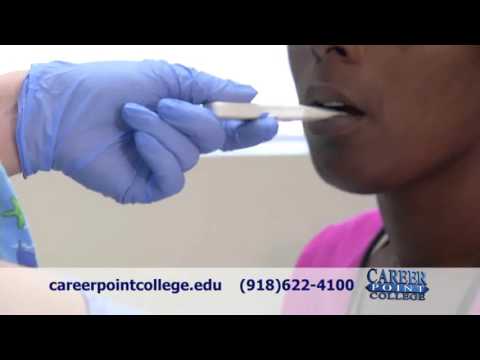How to Write Medical Assistant Soap Notes
Contents
- What are Soap Notes?
- Why are Soap Notes Important?
- How to Write a Soap Note?
- The Components of a Soap Note
- How to Write the Subjective Section of a Soap Note
- How to Write the Objective Section of a Soap Note
- How to Write the Assessment and Plan Section of a Soap Note
- Tips for Writing Soap Notes
- Examples of Soap Notes
- FAQs about Soap Notes
How to Write medical assistant Soap Notes. This guide provides tips and examples on how to write SOAP notes for a medical assistant
Checkout this video:
What are Soap Notes?
Soap notes are an integral part of a medical assistant’s job. They are used to document patient encounters, and provide important information for follow-up visits.
Soap notes must be concise, objective, and complete. They should include the following:
-Subjective data: This is information gathered from the patient, such as symptoms and how they are feeling.
-Objective data: This is information gathered by the medical assistant such as vital signs and physical examination findings.
-Assessment: This is the medical assistant’s interpretation of the patient’s condition, based on the subjective and objective data.
-Plan: This is the plan of action for the patient, which may include diagnostic testing, referrals to specialists, or prescribe treatments.
Why are Soap Notes Important?
Soap notes are important because they help to document patient care. They are used to chart the progress of a patient’s condition and can be used to provide continuity of care between different providers. Soap notes can also be helpful in litigation if there is a question about the care that was provided to a patient.
How to Write a Soap Note?
A SOAP note is a progress note that contains specific details on a patient’s condition and is used by Medical assistants to chart the course of treatment.
SOAP notes are an important part of documenting a patient’s progress and are used by physicians, nurses, and other medical professionals to assess a patient’s condition and plan their course of treatment.
A SOAP note must include four elements:
S – Subjective: This is the part of the SOAP note where the medical assistant documents the patient’s symptoms. This can be done through a conversation with the patient or by reviewing the patient’s medical history.
O – Objective: The objective section of the SOAP note contains specific objective data that can be measured and documented. This could include things like vital signs, weight, or lab results.
A – Assessment: In this section, the medical assistant will use the subjective and objective data to make an overall assessment of the patient’s condition. This will help to determine the course of treatment.
P – Plan: The plan section of the SOAP note contains the medical assistant’s recommendations for treatment. This could include things like referrals to specialist, diagnostic testing, or medication prescription
The Components of a Soap Note
Most notes will have four distinct sections, each labeled with a different letter. The first section, subjective data, will be labeled with an “S.” This is where you will document the patient’s symptoms and complaints in their own words. The second section, objective data, will be labeled with an “O.” Here, you will document your own observations of the patient. The third section, assessment, will be labeled with an “A.” In this section, you will reach a conclusion about the patient’s condition based on your review of the subjective and objective data. Finally, the fourth section, plan, will be labeled with a “P.” This is where you will document your plan for treating the patient’s condition.
Not every SOAP note will have all four sections – some may only have two or three – but all should have at least one letter from each quadrant in order to be considered complete.
How to Write the Subjective Section of a Soap Note
In the subjective section of your SOAP note, you will record the patient’s complaints in his or her own words. This information will help you to formulate a differential diagnosis and select the best course of treatment.
It is important to be as concise as possible when recording the patient’s complaints. You should not include any information that is not directly related to the reason for the visit. For example, if a patient comes in for a sprained ankle but mentions that she is also experiencing back pain, you would only record the complaint of ankle pain in the subjective section.
Once you have recorded the patient’s complaints, you will want to take a brief history. This will help you to better understand the complaint and rule out any potential causes. You should ask about the onset, duration, and severity of the symptoms as well as any aggravating or relieving factors. For example, if a patient has a headache, you would want to know if it is a sharp pain or a dull ache, if it comes and goes or is constant, and if anything makes it better or worse.
How to Write the Objective Section of a Soap Note
The objective section of a SOAP note for a medical assistant can be written in many different ways, but there are some key points that should always be included. First, the medical assistant should always identify the patient by name and date of birth. Next, the reason for the visit should be briefly stated. Finally, the medical assistant should write a brief overview of the patient’s chief complaint and any other relevant symptoms.
How to Write the Assessment and Plan Section of a Soap Note
Assessment and plan sections of soap notes are where the medical assistant enters his or her impressions of the patient’s condition and what will be done about it. Here are some tips for writing an effective assessment and plan.
First, make sure you have included all of the relevant information from the history and physical examination in the assessment section. The reader should be able to understand your rationale for choosing a particular diagnosis or diagnoses from this information.
Next, formulate a clear, concise plan for treatment or management of the patient’s condition. The plan should be based on the diagnosis or diagnoses made in the assessment section. Include any referrals to other healthcare providers that may be necessary.
Finally, make sure to document any follow-up that is planned, such as return visits, laboratory tests, or imaging studies. This will help ensure that the patient receives all of the care he or she needs.
Tips for Writing Soap Notes
As a medical assistant, you will be tasked with writing soap notes on a regular basis. Soap notes are an important part of documentation in the medical field, and it is important to know how to write them correctly. Here are some tips to help you write soap notes:
1. Use proper grammar and punctuation. This may seem like a no-brainer, but it is important to use proper grammar and punctuation when writing soap notes. Medical documents need to be clear and concise, so make sure your soap notes are free of errors.
2. Be clear and concise. Avoid unnecessarily long or wordy sentences. Soap notes should be easy to read and understand, so get to the point.
3. Use Medical Terminology correctly. Make sure you know the correct medical terminology for the conditions or procedures you are documenting. Incorrect use of medical terminology can lead to confusion and could potentially jeopardize patient care.
4. Focus on the relevant information. When writing soap notes, only include information that is relevant to the patient’s condition or treatment plan. irrelevant information can clutter up soap notes and make them more difficult to read and understand.
5. Follow the SOAP format. Most soap notes follow the SOAP format, which stands for Subjective, Objective, Assessment, and Plan. Make sure your soap notes include all of the relevant information in each section so that they are complete and accurate.
Examples of Soap Notes
There is no one perfect way to write soap notes, but there are a few elements that should always be included. First, the patient’s chief complaint should be clearly stated. This is usually followed by a brief history of the problem, including relevant information about the patient’s current health status, medications, and past medical history. Next, the medical assistant should document any physical exams that were performed and include details about the findings. Finally, the soap note should conclude with a plan for follow-up care or next steps.
Here are a few examples of soap notes that follow this basic format:
Patient presents with chief complaint of fatigue and flu-like symptoms for the past week. Patient reports feeling feverish and has a headache. Patient has been taking over-the-counter medication with no relief.
History: The patient is a 38-year-old female who is generally healthy except for occasional episodes of sinus infections. She is not currently taking any medications.
Exam: Patient has a temperature of 101°F, blood pressure of 120/80 mmHg, pulse of 98 bpm, and respiratory rate of 16 breaths per minute. She appears tired and flushed and has swollen lymph nodes in her neck.
Plan: The patient was diagnosed with viral syndrome and advised to rest, drink plenty of fluids, and take over-the-counter medication for fever and pain relief. She was also given a prescription for an antibiotic in case she develops a secondary bacterial infection.
FAQs about Soap Notes
What is a SOAP note?
A SOAP note is a method of documentation used by medical professionals to assess a patient, plan treatment, and track progress. This type of note is usually arranged into four sections, each identified by a different letter:
S – Subjective
O – Objective
A – Assessment
P – Plan
Subjective data is information that the patient tells the medical professional. This could include symptoms the patient is experiencing, how the illness is impacting their daily life, and any other relevant information. Objective data is information that the medical professional gathers through observation and testing. This could include vital signs, results of physical examinations, and results of lab tests.
The assessment section is where the medical professional makes a determination about the patient’s condition. This could include a diagnosis, proposed treatment plan, and prognosis. The plan section outlines the steps that will be taken to treat the patient’s condition. This could include medication prescriptions, referrals to specialists, and recommendations for lifestyle changes.
SOAP notes are an important part of the medical record because they provide a clear and concise summary of the patient’s condition and treatment plan. They can also be used to track progress over time and ensure that all members of the healthcare team are on the same page.







